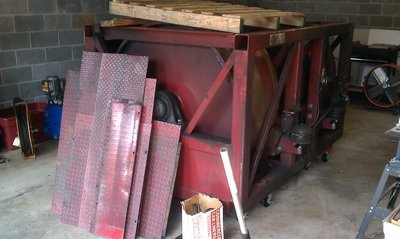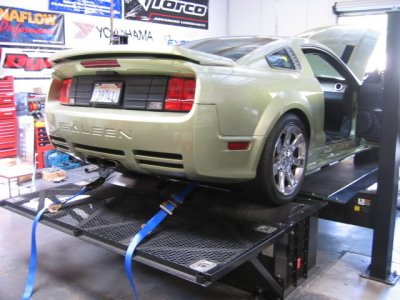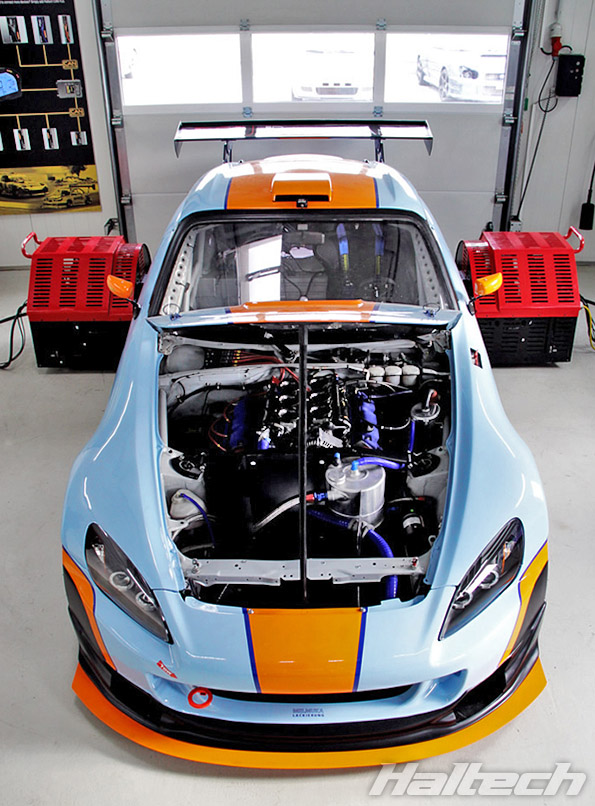Tom Fujita has been porting B16A/B18C heads since the 90's. NSX heads and B16A's share similar port design. I'm sure Tom can put all his experience from the B to develop a good NSX port work.
-
Protip: Profile posts are public! Use Conversations to message other members privately. Everyone can see the content of a profile post.
You are using an out of date browser. It may not display this or other websites correctly.
You should upgrade or use an alternative browser.
You should upgrade or use an alternative browser.
Cylinder Head Flow Tested
- Thread starter L_RAO
- Start date
they also do all of the FXMD time attack cars head-work so that must mean something, they came highly recommended
So what work did you have them do? Have you ever dynoed your car?I believe Comptech hand-ported the cylinder heads.
From a 1990's Comptech NSX catalog: "NSX enthusiasts looking to improve overall engine performance should consider the Comptech High-Velocity Cylinder Head option, a component of our highly successful Internal Engine Modification Package ("IEM Package"), the results of which feature an increase of up to 100hp! In developing the High-Velocity Cylinder Head, our race engineers have worked hard to gain additional top-end power without sacrificing low and mid-range torque. We accomplished this by keeping the port as small as possible and removing material in selected areas, with painstaking attention being given to the valve and seat pocket area. Our special design and engineering allows for the port volume to remain small, while increasing air velocity. The results produce a harmonious balance for street and track applications. If you desire more power for racing purposes, check with us regarding our Full Race Porting option (excellent for track use, but low-end drivability is sacrificed)."
When I had Comptech carry out work on my engine, I spoke with them about their "High Performance Intake Manifold". Again from their catalog: "Simply send us your original factory intake manifold, less all hoses, electronics, etc. We will then port and polish the manifold to our exacting specifications, utilizing the same equipment used to prepare our race team vehicles." They recommended, if I didn’t mind the extra cost, that I send my intake manifold to Extrude Hone instead since that yielded an even better result.
Based on that, I believe Comptech hand-ported the cylinder heads and did not have them Extrude Honed.
Dynosheet? Mods?I was at 298 rwhp on a 90 degree day on a dynojet....but no pre mod power level to compare.
So what work did you have them do? Have you ever dynoed your car?
Dynosheet? Mods?
http://www.nsxprime.com/forum/showthread.php/5011-The-Bumblebee-Puts-Out?highlight=bee+puts+out hope that helps.
Can you get the Dyno run winpep file? I'd love to overlay it with mine. You should add the Dyno to the registry.
So what work did you have them do? Have you ever dynoed your car?
Dynosheet? Mods?
In the winter of 1994/1995 I had my NSX's engine modified with the following: Comptech-modified OEM airbox, Unifilter foam air filter, Extrude Honed intake manifold, Comptech ported and polished cylinder heads milled for a slightly increased compression ratio (~10.6:1), Comptech high-lift camshafts, Comptech ceramic coated headers, HKS muffler, and the engine management chip in the PGM-FI was custom-programmed by Autothority with the car on a dyno.
While the PGM-FI was being reprogrammed, the Clayton dyno measured 408 rwhp and in the exact same state of tune, a Bosch dyno measured 270 rwhp (dyno sheet here). 238 rear wheel horsepower is what the Dynolicious app on my iPhone said my NSX has. My car was in the same state of tune for all of those measurements. So much for rear wheel horsepower measurements on different dynos.
Amazingly, driveline loss measurements seem to vary even more. The Bosch dyno that measured 270 rwhp for my NSX also measured the driveline loss as 10.4% at 216.0 km/h. A Maha dyno measured the driveline loss in Procar Special’s NSX as 24.0% at 218.3 km/h.
Combining the wildly varying rear wheel horsepower figures with inaccurate driveline loss measurements, I can calculate anything between 265 and 537 crank horsepower for the same car in the same state of tune. Or I could just use those dyno printouts as toilet paper.
Dynos are great for comparing various runs on the same day and as a tool when programming an engine management chip. But as an absolute measure of power, I think they’re of little value if you don’t have a comparison vehicle along to provide you a reference value. It’s too bad that almost no dynos are regularly calibrated to ensure the numbers they spit out are actually accurate.
When you're measuring KW and converting to HP (225KW = 301.6HP) and looking at various types of dynos (loading vs. inertial) and brands, processes, testing, weather, etc.. sure you can get lost.
I don't accept a 24% drivetrain loss of any NSX and you can't compare converted numbers to different types of dynos. I have had success of dynoing a car on the same day with a loading Mustang dyno and a loading Dynojet 225xLC and have the result come within 5hp of eachother. So it is possible if you take out many variables.
I don't suppose anyone around there has a Mustang or Dynojet dyno?
I'm not sure if Docjohn's Dynojet was a load bearing or inertial, but with slightly more work done to his car than mine, he is showing 20whp more than the 269whp/205tq that my car put down. This sounds acceptable if it were the same load bearing dyno, but if it was an inertia dyno, then that difference would be smaller. Either way, they are in a close ballpark and not the 250hp spread that you are having.
I would guess with your mods, 310whp +/- 20hp is likely. (which should be ~370bhp +/- 20hp on a 15% drivetrain loss).
I don't accept a 24% drivetrain loss of any NSX and you can't compare converted numbers to different types of dynos. I have had success of dynoing a car on the same day with a loading Mustang dyno and a loading Dynojet 225xLC and have the result come within 5hp of eachother. So it is possible if you take out many variables.
I don't suppose anyone around there has a Mustang or Dynojet dyno?
I'm not sure if Docjohn's Dynojet was a load bearing or inertial, but with slightly more work done to his car than mine, he is showing 20whp more than the 269whp/205tq that my car put down. This sounds acceptable if it were the same load bearing dyno, but if it was an inertia dyno, then that difference would be smaller. Either way, they are in a close ballpark and not the 250hp spread that you are having.
I would guess with your mods, 310whp +/- 20hp is likely. (which should be ~370bhp +/- 20hp on a 15% drivetrain loss).
I believe Car and Driver or one of those car magazines have established that the NSX has a 14% drivetrain loss.
Funny that MB warned you about the valve springs in that thread. Prescient?
Was the drum 4-5 feet in diameter (Dynojet 248):Billy I have no idea what kind of dynojet but I can tell you it was a portable unit on a trailer that the car had to drive up on.It came to the track I was running on.

or ~3 feet in diameter (Dynojet 224):

-Do you have or can you get the actual winpep dyno pull file on the computer from those guys?
-Your sig says a 2000 3.2L Was the 3.2L the motor that had the comptech work done to it and dynoed in 2002 or did that motor blow up and you replaced it with the 3.2?
Last edited:
I don't suppose anyone around there has a Mustang or Dynojet dyno?
I don't know of anyone around here who has a Mustang or Dynojet dyno but then again, I haven't really looked. After I get my RDX injectors installed and my PGM-FI reprogrammed, I'd like to do some back to back tests with a bone stock NA1 five-speed on the same dyno on the same day to measure the difference.
I don't accept a 24% drivetrain loss of any NSX...
If you think a 24% driveline loss at 218.3 km/h sounds unrealistic for an NSX, how about a 32% loss? See the measurement carried out during m666 edd's dyno run over on the NSX Club of Britain's website here. Both Procar Special's and m666 edd's runs were carried out on Maha dynos which are very respected – which makes me trust dynos even less unless you do some same dyno, same day, same gear runs against a benchmark keeping as many variables as possible constant.
I believe Car and Driver or one of those car magazines have established that the NSX has a 14% drivetrain loss.
14% is probably a better rough approximation for an NSX than 24% or 32% but in reality, drivetrain loss isn't a constant percentage. The percentage varies with speed as well as with transmission oil temperature, tire pressure, road surface, etc. If you read some technical literature on the subject you can understand why it isn't a constant percentage but you can see the effect in the dyno sheet I posted above, in m666 edd's, or in Procar Special's (here and here. Note: Radleistung Prad is power at the wheel, Schleppleistung is drivetrain loss, Motorleistung Pmot is power at the crank, Norm-Leistung Pnorm is power at the crank corrected for atmospheric conditions).
It does not sound like those Dyno operators know what they are doing. How are they determining drivetrain loss? Also the correction factor: Actual, STD, SAE, DIN, etc... Affects the final number as well.
Common sense and various testing would indicate that an NSX or most any transverse engine config is not causing 24-32% losses. I'd say its pretty well documented that total losses are in the 14% ballpark. While I agree that many variables can effect the final #, tire pressure isn't huge, and under equal conditions, a good Dyno with proper testing should be consistent from run to run even on different days. The hydraulic loading Dynojet 224 seems to be very consistent and repeatable. An E90 M3 in California puts down the same power (within 5-10whp) to the same type of Dyno across the country in North Carolina, and the same (within 5whp) on a Mustang dyno. All of this is SAE power numbers and the Mustang and 224 seems to be a very accurate tool.
Back to back testing with a stock car on the same dyno will tell you a lot more about what is going on with your dynos, but I would first find a reputable shop and preferably one with a Mustang or Dynojet 224.
Edit: what gear was your Dyno pull performed in?
Common sense and various testing would indicate that an NSX or most any transverse engine config is not causing 24-32% losses. I'd say its pretty well documented that total losses are in the 14% ballpark. While I agree that many variables can effect the final #, tire pressure isn't huge, and under equal conditions, a good Dyno with proper testing should be consistent from run to run even on different days. The hydraulic loading Dynojet 224 seems to be very consistent and repeatable. An E90 M3 in California puts down the same power (within 5-10whp) to the same type of Dyno across the country in North Carolina, and the same (within 5whp) on a Mustang dyno. All of this is SAE power numbers and the Mustang and 224 seems to be a very accurate tool.
Back to back testing with a stock car on the same dyno will tell you a lot more about what is going on with your dynos, but I would first find a reputable shop and preferably one with a Mustang or Dynojet 224.
Edit: what gear was your Dyno pull performed in?
Last edited:
Dynos over here measure the driveline loss by measuring how long it takes for the rollers to spin down. You floor it until you hit the rev limiter, keep the car in gear but depress the clutch, and the dyno measures how long it takes the rollers to spin down due to the drag caused by the tires, axles, and transmission. That's added to the measured power at the wheels to come up with crank hp figures.
My dyno run was corrected to DIN given the ambient air temperature of 24°C and pressure of 989 hPa. m666 edd's run was also corrected to DIN. Procar's was corrected to EWG 80/269 which is DIN but correcting for humidity as well as temperature and pressure. The dyno sheets show the raw and the corrected figures.
Looking at the speeds reached, you can see what gears the cars were tested in. My 5-speed was tested in fourth. m666 edd's reached 131 mph at 8100 rpm and Prospeed's reached 237.0 km/h at 7600 rpm so you could use that calculate what gears they were in.
Over here, American dynos are often considered quite optimistic. Most of the dynos I know of are German Bosch or Maha units. The shop where I want to get my PGM-FI reprogrammed has a dyno from an Italian manufacturer. The crank hp figures the dynos over here spit out are, for stock cars, usually very close to the manufacturer's claimed crank hp. Despite that, without some same day, same dyno tests against a benchmark, I don't trust them. There's just no way m666 edd's NSX has three times as many driveline losses as mine and there's no way one dyno should measure my car as putting out 270 wheel hp while another measures 408.
My dyno run was corrected to DIN given the ambient air temperature of 24°C and pressure of 989 hPa. m666 edd's run was also corrected to DIN. Procar's was corrected to EWG 80/269 which is DIN but correcting for humidity as well as temperature and pressure. The dyno sheets show the raw and the corrected figures.
Looking at the speeds reached, you can see what gears the cars were tested in. My 5-speed was tested in fourth. m666 edd's reached 131 mph at 8100 rpm and Prospeed's reached 237.0 km/h at 7600 rpm so you could use that calculate what gears they were in.
Over here, American dynos are often considered quite optimistic. Most of the dynos I know of are German Bosch or Maha units. The shop where I want to get my PGM-FI reprogrammed has a dyno from an Italian manufacturer. The crank hp figures the dynos over here spit out are, for stock cars, usually very close to the manufacturer's claimed crank hp. Despite that, without some same day, same dyno tests against a benchmark, I don't trust them. There's just no way m666 edd's NSX has three times as many driveline losses as mine and there's no way one dyno should measure my car as putting out 270 wheel hp while another measures 408.
bringing an old thread back. 408whp are nearly 500hp to the crank. no way you can get up more than 130hp per liter displacement. So you are limited to a max of 390 crank hp with gas station fuel and beeing streetable. To reach that amount of HP you need an ITB system.
I thought the NSX had a 12% drivetrain loss.... so that would make the 408rwhp at 456HP at the crank.
no way you can have 456hp to the crank with 3.0i in pump gas. A fully tuned 3.0i C30A engine with VTEC killers and ITBs would have max. 400+hp. You are limited to 130+ hp/liter on pump gas and 12:1 CR
When I asked TODA about the engine packages when looking at their pistons they quoted me 3.5L engine build with all the gear 450hpno way you can have 456hp to the crank with 3.0i in pump gas. A fully tuned 3.0i C30A engine with VTEC killers and ITBs would have max. 400+hp. You are limited to 130+ hp/liter on pump gas and 12:1 CR
I have nothing to add here other than what a pleasure it is to come back to the forum and see such awesome technical stuff over what is on facebook. I really have an appreciation for every person that has posted on this particular thread, you guys all bring so much value to ownership. Thank you.
When I asked TODA about the engine packages when looking at their pistons they quoted me 3.5L engine build with all the gear 450hp
The S2K with Brian Crower 3.5 stroker has exactly 450hp to the engine with many other mods. This is the car from my engine tuner in Vienna using many Toda parts as well. More infos on www.haltech.com. I also posted some infos about this car back when it has a TODA 3.0i engine dynoed at 390bhp. link: http://www.nsxprime.com/forum/showthread.php/166467-Official-ITB-Reference-Thread/page4

The S2K with Brian Crower 3.5 stroker has exactly 450hp to the engine with many other mods. This is the car from my engine tuner in Vienna using many Toda parts as well. More infos on www.haltech.com. I also posted some infos about this car back when it has a TODA 3.0i engine dynoed at 390bhp. link: http://www.nsxprime.com/forum/showthread.php/166467-Official-ITB-Reference-Thread/page4

I'm really liking the Gulf style livery!
Great to see some N/A threads revived!
Similar threads
- Replies
- 5
- Views
- 2K
- Replies
- 59
- Views
- 7K
- Replies
- 7
- Views
- 9K








